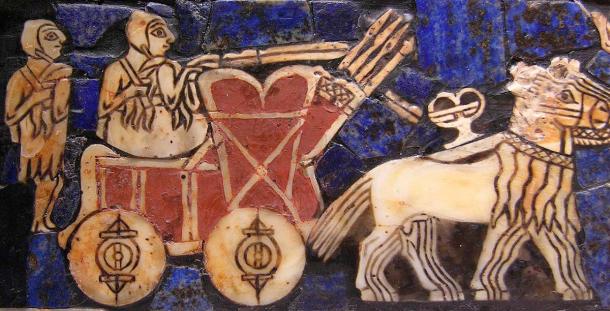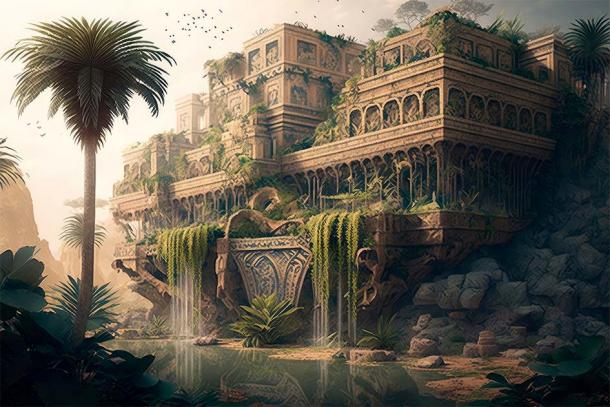
3500 bc is about 1000 years earlier than the Great pyramid which is the likely high point of hte Atlantean world or what we know as the European Bronze Age.
The magic of mesopotania is that they did cuniform which actually came down to us.
A pony drawn chariot is ideal for flat land and that mattered here. It likely took serious size improvement for those ponies to carry men.
We had sea borne shipping by 2400 BC at the least. The effect was also global and it is likely this inspired complex cultures world wide.
The Great Pyramid is actual proof of quality copper from lake Superior and of a thousand year prehistory to make it all possible. And we have 3500 BC.
Five Surprising Ways Mesopotamia Shaped the World
UPDATED 4 MAY, 2023 - 18:54 LEX LEIGH
One of the most fascinating and accomplished civilizations in history was the fruitful region of Mesopotamia. Frequently called the “Cradle of Civilization,” Mesopotamia was home to some of the earliest and most intriguing innovations, making it a fascinating civilization to study. The Mesopotamians were a remarkable civilization, boasting not only skilled architects but also brilliant astronomers. Their cultural legacy is a testament to their impressive achievements.
1. Mesopotamia's Ingenious Inventions: From the Wheel to Towering Ziggurats
The Mesopotamians were a highly innovative civilization, responsible for many inventions that had a significant impact on human civilization. For one, they were among the first to use the wheel. The invention of the wheel not only revolutionized transportation by enabling the use of carts and chariots, but it also transformed agriculture by facilitating the use of plows, demonstrating the far-reaching impact of Mesopotamian ingenuity.
The invention of the wheel around 3500 BC had a significant impact on the economy of Mesopotamia. The wheel allowed for the transportation of goods and materials over longer distances, which in turn led to the growth of trade and commerce. Using the wheel made it easier for armies to move and transport their equipment, which played a crucial role in the expansion and defense of the Mesopotamian empire.
Beyond the wheel, Mesopotamian architects and builders were also highly skilled at constructing impressive structures such as ziggurats and temples. They frequently built arch and dome structures that could support the weight of large buildings. Their advanced irrigation systems, consisting of canals and ditches, helped to manage the Tigris and Euphrates rivers and allowed their people to settle in large urban areas and expand agriculture.
While it is unclear if they were the first, Mesopotamians are also documented as some of the earliest people to use sailboats. The Mesopotamians were skilled in building riverboats, which were used for fishing, transportation and trade. These boats were made of reeds, which were lightweight, buoyant and could easily be repaired. They later developed more advanced boats made of wood, with curved hulls and multiple decks.

The Standard of Ur, from circa 2500 BC, includes a depiction of a cart with wheels. Ancient Mesopotamia was one of the first civilizations to use the wheel. ( Public domain )
2. Mesopotamia Was Home to One-Seventh of the Wonders of the Ancient World
The Hanging Gardens of Babylon were one of the most famous and mysterious wonders of the ancient world . The gardens were said to have been built in Mesopotamia in the city of Babylon by King Nebuchadnezzar II sometime during the 6th century BC.
According to legend, the gardens were built as a gift for Nebuchadnezzar's wife, Amytis of Media, who was homesick for the lush greenery of her homeland. He designed the hanging gardens to resemble a mountain with terraced gardens, waterfalls and exotic plants. They were irrigated using one of Mesopotamia’s complex systems of pumps and canals, which brought water from the nearby Euphrates River.
Although the Hanging Gardens of Babylon were described in many ancient texts, including the writings of Greek historians like Strabo and Diodorus Siculus, there is no definitive evidence that they ever existed. Archaeological excavations of the site have not uncovered any remains of the gardens, and there are no surviving descriptions or depictions of the gardens from the time they were supposed to have been built.
Despite this lack of evidence, the Hanging Gardens of Babylon remain one of the most enduring and romanticized symbols of Mesopotamia and the ancient world as a whole. The mysterious gardens have inspired countless works of art, literature and popular culture, and have captured the imagination of people for centuries.

Representational image of the Hanging Gardens of Babylon, remembered as one of the wonders of the ancient world. ( Kishore Newton / Adobe Stock)
3. Mesopotamians Implemented the World’s Earliest Code of Law
The Code of Hammurabi was one of the first legal codes in the world and is considered a significant achievement of ancient Mesopotamia. It was created by the Babylonian king Hammurabi sometime around 1754 BC.
The Code of Hammurabi was based on the principle of “an eye for an eye,” which meant that the punishment for a crime should be proportional to the offense committed. It consists of 282 laws and punishments for crimes, which were inscribed on a seven-foot-tall stone pillar. The laws covered a wide range of topics, including family law, property law and criminal law. The punishments for crimes were often severe, ranging from fines and compensation to amputation and death, depending on the crime committed.
The Code of Hammurabi was designed to provide a framework for society and government, and was meant to establish a sense of justice and fairness among the people. It was also intended to reinforce the power and authority of the king, by demonstrating his ability to impose order and stability within the kingdom.
Written in cuneiform, an ancient form of writing that involved pressing a stylus into clay tablets to form wedge-shaped markings, the Code of Hammurabi was also an influential aspect of Mesopotamian civilization. Its influence can be seen in later legal codes, such as Roman law and Jewish law.

The Code of Hammurabi is a Babylonian legal text written in Akkadian. The Mesopotamian code of law was discovered inscribed on a basalt stele, known as the Stele of Hammurabi, now housed at the Louvre Museum in Paris. (Rama / CC BY-SA 3.0 FR )
4. Mesopotamians Used Math and Astronomy to Shape Modern Science
In addition to their impressive design and construction skills, the Mesopotamians were skilled observers of the night sky and made important discoveries about the movement of celestial bodies. They developed a system of mathematics based on the number 60, which they used to measure time, angles and distances. This system is still used today. In fact, this is the reason for why an hour is considered to have 60 minutes in it.
One of the most important Mesopotamian contributions to astronomy was the development of a system to track the movement of the stars and planets. They divided the night sky into twelve regions, which corresponded to the twelve lunar months of the calendar. The Mesopotamians also developed a system of astrology, which they believed could predict future events based on the positions of the stars and planets.
The Mesopotamians later combined these discoveries to divide the day into 24 hours, based on the rotation of the Earth. They also used sundials and water clocks to measure time, which helped to regulate daily activities such as work and worship.
5. They Made One of the Earliest Calendar Systems
In addition to dividing time in terms of minutes and hours, the Mesopotamians developed an early calendar system based on lunar cycles. In fact, Mesopotamia is credited with the development of one of the earliest known calendar systems in human history. The Mesopotamian calendar system was based on the cycles of the moon and is considered one of their greatest creations.
The Mesopotamian calendar consisted of 12 lunar months, each with 29 or 30 days, which added up to a total of 354 days per year. To account for the extra 11 days in the solar year, the Mesopotamians added a 13th month to the calendar every three years.
Their calendar was also divided into two seasons, each consisting of six months. The first season was called the “Summer Season” and included the months of Nisan, Iyar, Sivan, Tammuz, Av and Elul. The second season was called the “Winter Season” and included the months of Tishrei, Marcheshvan, Kislev, Tevet, Shevat and Adar.
The Mesopotamians not only used their calendar for keeping track of time, but also for religious and agricultural purposes. Many Mesopotamian festivals and rituals were based on the cycles of the moon and the changing seasons, and the calendar helped to regulate agricultural activities such as planting and harvesting. Their calendar was so popular that it was later adopted by other civilizations, including the Greeks and Romans.
Ancient Practices That Captivate Even Today
Mesopotamia was a civilization of great innovation and achievement, with many fascinating facts and contributions to human history. From their inventions and architectural marvels to their legal codes and astronomy, the Mesopotamians were remarkable people whose legacy continues to influence our modern world.
Their innovations were so influential that their calendar system and several of their mathematical concepts are still used today. Clearly, Mesopotamia truly earned its reputation as the cradle of civilization , and its impact on human history will continue to be studied and appreciated for years to come.
Top image: Representational image of a ziggurat tower structure in ancient Mesopotamia. Source: top images / Adobe Stock
By Lex Leigh
No comments:
Post a Comment